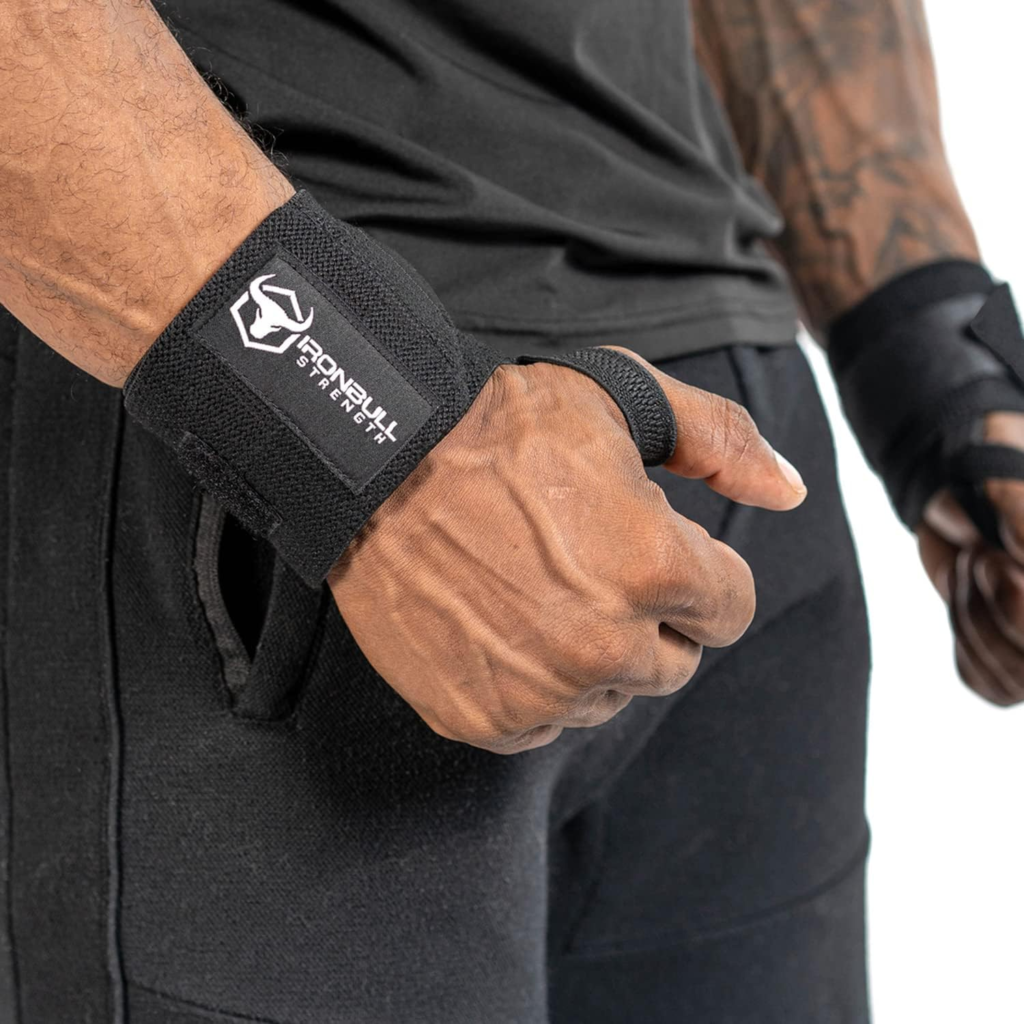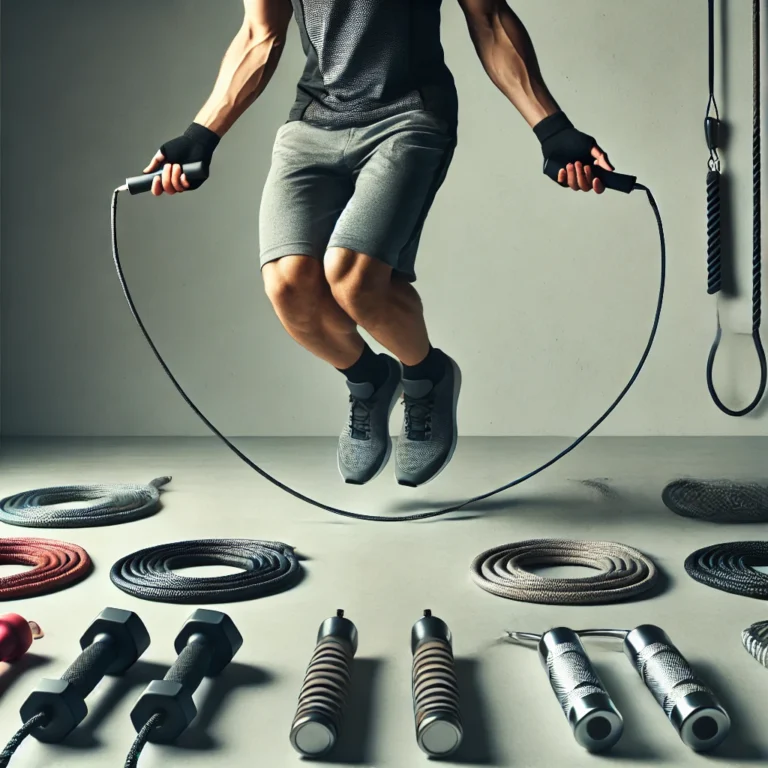Learning how to use wrist wraps effectively can make a big difference in your workout performance and help protect your wrists from injury. Whether you’re lifting heavy weights, performing high-rep exercises, or simply looking for extra support, wrist wraps can provide the stability you need to maintain proper form and reduce strain on your wrists. In this guide, we’ll walk you through the key steps on how to use wrist wraps correctly, explain when to wear them, and offer tips on choosing the right type of wrap for your specific fitness goals. By the end, you’ll know exactly how to incorporate wrist wraps into your training routine for maximum benefit.
Table of Contents

How to Use Wrist Wraps: Step-by-Step Guide
Step 1: Unroll and Position the Wrist Wrap
Begin by unrolling the wrist wrap completely. Hold the wrap by the thumb loop, which is typically found at one end of the wrap. Place your hand palm-side up and position the wrap at the base of your wrist, just below the palm. Make sure the wrap is not too high on your wrist to allow proper movement.
Step 2: Secure the Thumb Loop
Slip your thumb through the thumb loop to hold the wrap in place. This will anchor the wrap and make it easier to start wrapping around your wrist. Ensure the wrap sits comfortably on your wrist without pulling too tightly on the thumb.
Step 3: Start Wrapping Around the Wrist
Begin wrapping the wrist wrap around your wrist. Make the first wrap firm but not overly tight to avoid restricting blood flow. Overlap each layer by about half the width of the wrap to provide even support. Continue wrapping until the wrap reaches the desired tightness.
Step 4: Adjust the Tightness
As you continue wrapping, adjust the tightness according to your comfort level. The wrap should feel snug and supportive, providing stability to your wrist, but not so tight that it causes discomfort or numbness. If it feels too tight, unwrap slightly and readjust.
Step 5: Secure the Wrap with Velcro
Once you’ve wrapped the wrist wrap to the desired tightness, secure the end with the Velcro closure. Make sure the Velcro is firmly attached to prevent the wrap from coming loose during your workout. The wrap should feel stable and provide support to the wrist.
Step 6: Test the Wrap and Adjust if Necessary
After securing the wrist wrap, test the range of motion in your wrist. Try bending and moving your wrist to ensure the wrap is not too restrictive. If it feels too tight or too loose, adjust the wrap accordingly. Once it feels comfortable, you’re ready to begin your workout.
learn everything you need to know about wrist wraps here
How Tight Should They Be?
When using wrist wraps, it’s essential to find the right balance in tightness to ensure both comfort and support. The wrap should be snug enough to provide stability to your wrist joint and protect it from excessive strain during heavy lifting or strenuous activities. You should feel a noticeable difference in the support around your wrist, but it shouldn’t be so tight that it cuts off circulation, causes numbness, or restricts your range of motion.
A good rule of thumb is to wrap firmly enough that the wrap stays in place without slipping or shifting as you move. However, it should not cause discomfort or pain. If you feel any tingling or your hand starts to change colour, this is a sign that the wrap is too tight, and you should readjust it immediately. It’s always a good idea to test the tightness by flexing your wrist after securing the wrap. You should still be able to move your wrist with a bit of resistance but without experiencing pain.

Remember, the primary purpose of the wrap is to provide support and stability, not to immobilize the wrist completely. Finding that balance will help you achieve the best performance and safety during your workouts.
Learn how to put wrist wraps on the correct and most beneficial way here
When to Use Wrist Wraps During Your Workout?
Wrist wraps are most beneficial during exercises that place a significant amount of stress on your wrists, particularly when lifting heavy weights or performing movements that require a strong grip. They provide extra stability, helping to reduce the strain on your wrist joints and supporting proper alignment. You’ll find wrist wraps especially useful during exercises like bench presses, overhead presses, clean and jerks, and snatches, where the weight is directly loaded onto your wrists.

Similarly, they can be helpful for athletes who are recovering from wrist injuries, as they provide additional support and allow for gradual reintroduction to challenging movements. If you feel any discomfort or weakness in your wrists during heavy lifts, wrist wraps can help stabilize the area and give you the confidence to perform more intense workouts.
However, it’s important not to over-rely on wrist wraps. You shouldn’t use them during lighter exercises or workouts that don’t heavily involve your wrists, as this can lead to dependency and may prevent your wrists from developing natural strength and stability. For instance, when performing warm-up sets, accessory movements, or endurance-based exercises, it’s best to leave the wraps off to encourage your wrists to work independently. Over time, this balance between using wrist wraps for support during heavy lifts and training your wrists during lighter activities will lead to stronger, more resilient wrists overall.
Learn about all the different types of wrist wraps and how to use there here
Choosing the Right Wrist Wraps for Your Needs and Exercises
Choosing the right wrist wraps is essential for getting the best support based on your specific fitness goals. Not all wrist wraps are the same—there are different types designed for various activities, and selecting the appropriate one can make a significant difference in your performance and comfort. Factors such as wrap stiffness, length, and material should be carefully considered depending on the kind of exercises you’re doing. Below is a guide to different types of wrist wraps and how to choose the best one for your needs.
1. Lightweight Wrist Wraps
When to Use:
Lightweight wrist wraps are ideal for athletes who need a bit of extra support without sacrificing wrist mobility. These wraps are often made of more flexible, thinner materials, making them a great choice for activities like bodyweight exercises, CrossFit, or high-repetition workouts. They provide just enough stability to protect your wrists while allowing full range of motion for dynamic movements.
When Not to Use:
These wraps are not ideal for heavy lifting or powerlifting, where more rigid support is necessary to protect against strain from high weights. If you’re performing exercises like bench presses with significant loads, lightweight wraps may not provide the firm support your wrists need.
2. Heavy-Duty Wrist Wraps
When to Use:
Heavy-duty wrist wraps are designed for maximum support during heavy lifts, such as powerlifting, Olympic weightlifting, and bodybuilding. These wraps are typically thicker and more durable, making them perfect for exercises where wrist stability is crucial, such as bench presses, deadlifts, and overhead presses. They help prevent wrist injury by locking the wrist in place, allowing you to focus on lifting without worrying about strain.
When Not to Use:
Avoid using heavy-duty wraps during lighter, high-repetition workouts or mobility exercises, as they can be too restrictive. These wraps limit your wrist flexibility and can hinder the development of natural wrist strength if overused in exercises that don’t require significant wrist support.
3. Stiff Wrist Wraps
When to Use:
Stiff wrist wraps are best for lifters who prioritize wrist immobilization during maximal lifts. These wraps offer extreme stability, making them suitable for powerlifting, where controlling heavy weights is key. They keep the wrist in a fixed position, ensuring that it doesn’t bend under pressure, which can help you push through heavy lifts like squats, deadlifts, or overhead movements.
When Not to Use:
Because of their rigid nature, stiff wrist wraps can be uncomfortable or unnecessary for exercises that involve a lot of wrist movement, such as cleans, snatches, or functional training. If the workout requires more wrist flexibility, opt for a more flexible wrap instead.
4. Length Variations (Long or Short)
When to Use:
- Long Wraps: Longer wrist wraps provide more layers of support, making them perfect for heavy lifting or powerlifting. The extra material allows you to wrap your wrist multiple times, giving it additional stability and a tighter feel. These wraps are ideal for heavy lifts where wrist integrity is crucial.
- Short Wraps: Shorter wrist wraps are great for athletes who want moderate support without excessive bulk. They are easier to adjust and provide enough stability for medium-weight training or high-rep exercises. They are less restrictive, allowing a good range of motion.
When Not to Use: - Long Wraps may be too cumbersome for workouts requiring speed or flexibility, such as CrossFit or functional training.
- Short Wraps may not provide enough support for maximal lifts where wrist strain is more likely to occur.
5. Material Considerations

When to Use:
- Cotton Wraps: Cotton wraps are soft, flexible, and breathable, which makes them a great choice for endurance training, functional fitness, or everyday weightlifting. They allow more flexibility in the wrist, making them suitable for activities that require a lot of movement.
- Elastic Wraps: Elastic wraps provide more compression and tighter support. These wraps are ideal for heavier lifts, offering firm wrist stabilization. Elastic materials stretch and conform tightly around the wrist, helping maintain position under load, which is important in strength training or powerlifting.
When Not to Use:
- Cotton Wraps should be avoided during heavy lifting sessions where firm wrist stabilization is needed, as they may lack the stiffness required to keep the wrist in place.
- Elastic Wraps may feel too tight or restrictive during dynamic movements or high-repetition workouts, limiting wrist mobility.
Common Mistakes to Avoid When Using Wrist Wraps
Wrist wraps can be a valuable tool for providing support during strength training, but improper use can reduce their effectiveness and even lead to discomfort or injury. Below are some of the most common mistakes people make when using wrist wraps, along with tips on how to avoid them for optimal results.
1. Wrapping Too Tightly
The Mistake:
One of the most frequent errors is wrapping the wrist wraps too tightly. While it’s important to have a snug fit for support, over-tightening can cut off circulation, causing numbness, tingling, or even swelling in your hands and fingers.
The Solution:
Aim for a snug but comfortable fit. The wrap should provide firm support without causing discomfort or restricting blood flow. After wrapping, flex your wrist to ensure you still have some range of motion without feeling any excessive pressure or pain. If your hand starts to go numb, it’s a clear sign the wrap is too tight, and you should readjust it.
2. Placing the Wrap Too High or Too Low
The Mistake:
Another common mistake is incorrectly positioning the wrist wrap. Wrapping it too high on the forearm or too low on the hand can reduce the stability it provides to the wrist joint, leaving the wrist unsupported.
The Solution:
Position the wrist wrap just below the base of the palm, right where your wrist bends. This placement will ensure that the wrap provides adequate support to the wrist joint without interfering with your hand’s movement. Take care not to wrap too high up your forearm, as this will limit its effectiveness in stabilizing the wrist.
3. Using Wrist Wraps for Every Exercise
The Mistake:
Over-relying on wrist wraps for every exercise, even when it’s not necessary, is a mistake that can prevent your wrists from developing natural strength. Wearing wrist wraps during lighter exercises or non-wrist-intensive movements can lead to dependency, weakening your wrist over time.
The Solution:
Use wrist wraps only when necessary, such as during heavy lifts or movements that put significant stress on your wrists. Avoid using them for warm-ups, light sets, or exercises that don’t involve a lot of wrist strain, like cardio, bodyweight exercises, or endurance training. This will help maintain and improve your wrist strength without over-relying on the extra support.
4. Wrapping Too Loosely
The Mistake:
If the wrap is too loose, it won’t provide the necessary support for your wrists, rendering it ineffective. A loose wrap may shift or slide during exercise, leaving your wrist vulnerable to strain or injury.
The Solution:
Ensure the wrap is snug enough to stay in place during your workout. The key is finding a balance between tightness and comfort—firm but not restrictive. After wrapping, test it by performing a few wrist movements to check if the wrap holds steady without slipping.
5. Not Securing the Velcro Properly
The Mistake:
Failing to fasten the Velcro securely is a common issue, especially when you’re rushing through your workout. A loosely fastened Velcro strap can cause the wrap to come undone mid-lift, reducing support and increasing the risk of injury.
The Solution:
Take a moment to make sure the Velcro is securely fastened before starting your set. A properly secured wrap will stay in place throughout your workout, providing consistent support to your wrists. Double-check the wrap before each lift to ensure it remains secure and doesn’t loosen during movements.
6. Using Worn-Out or Poor-Quality Wraps
The Mistake:
Using old, worn-out wrist wraps or those made from poor-quality materials can significantly reduce their effectiveness. Over time, the fabric may stretch out or the Velcro may weaken, making the wrap less supportive.
The Solution:
Regularly inspect your wrist wraps for signs of wear and tear, such as fraying, loss of elasticity, or weakened Velcro. Replace them when they no longer offer the stability you need. Additionally, invest in high-quality wraps made from durable materials that can withstand the rigors of your workouts.
Conclusion
Wrist wraps are a powerful tool to enhance your performance and protect your wrists during heavy lifts or exercises that place strain on the joint. By understanding how to use them properly, selecting the right type for your needs, and avoiding common mistakes, you can maximize the benefits they provide while ensuring the safety of your wrists. However, it’s important to remember that wrist wraps are meant to supplement your training, not replace the need for proper wrist strength and mobility. Use them when needed, but don’t rely on them for every exercise to avoid developing dependency.
With the right approach, wrist wraps can become an essential part of your training routine, helping you push through challenging workouts with confidence and support. Keep these tips in mind, and you’ll be well on your way to safer, more effective workouts.






2 Comments
Comments are closed.